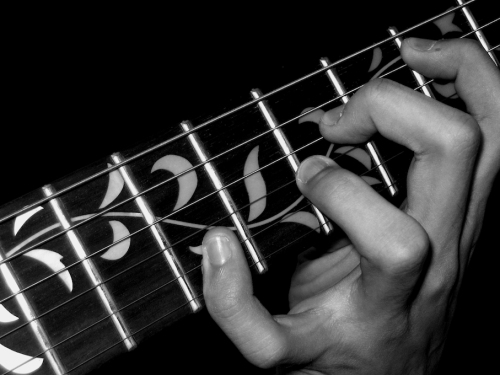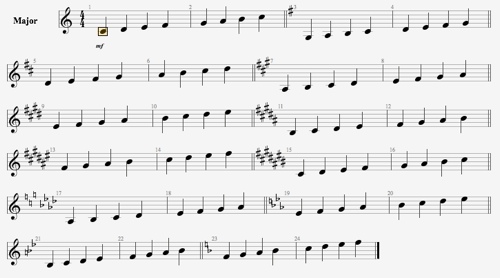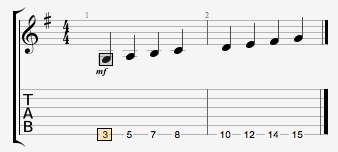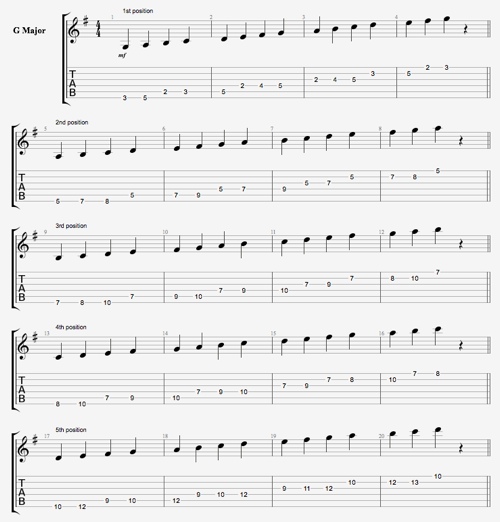
I am remaking a series of guitar lessons I wrote to Wholenote.com about 8 years ago. Hopefully, this will be useful to some people out there who are learning on their own to play the guitar.
The first topic I will cover is the Major Scale, which is the backbone for everything else I am planning to talk about. First, prerequisites. This is not a lesson for very fresh beginners. It is expected that the player knows:
- How to play some chords and scales on the guitar using a pick.
- The fingerboard: how strings and frets are numbered, standard EBGDAE tuning and the notes on each string.
- How to read tablature and, preferably, music notation in the G2 clef.
- How to read chord and scale patterns.
- Intervals and fretboard patterns for them.
If you meet the criteria, let’s get started. As a word of warning, this is a very long 3-part lesson. In this first part, we will cover the theory basics and the usual 7 playing positions for the Major Scale.
In Part 2, we will take a look at the William Leavitt’s fingerings for the Major Scale. And in the third and last part, we will cover the CAGED system.
Major Scale
As I said before, the Major Scale is very important. It is a diatonic scale comprising 5 whole steps and 2 half steps, from which all the Modes are derived from.
Sound-wise, it has an upbeat character and it is used in a variety of styles like rock, country and jazz.
The notes are: I-II-III-IV-V-VI-VII-VIII and the intervals are: W-W-H-W-W-W-H (W=whole step/Major 2nd, H=half step/Minor 2nd). You can easily construct all the major scales from the intervals. Here are all of them for reference, starting in C, then going up a fifth to G, then another fifth to D and so on:

Constructing the Major Scale on the fingerboard and position playing on the guitar
Thinking horizontally, we can construct the G Major scale like this:

Of course, this is not the most efficient way of playing a Major Scale on the guitar. To make things better, there are 7 patterns (or positions) for playing the Major Scale across the fingerboard.
Let’s start by taking a look at the 1st position, the ‘standard’ way of playing a Major Scale. I will use C Major as an example.

The idea of scale positions is to keep the hand position static when playing them. In the 1st position, in order to accomplish that, you start playing the root on the 6th string with your second finger. Now, let’s move the hand up two frets and take a look at the 2nd position.

This position starts on the II note, and goes up for 3 octaves, like the 1st position. As you may have already noticed, if you play the root on the 8th fret with your first finger and slide it up to the 10th fret to play this pattern up to the 13th fret of the 2nd string, you will end up playing the same 3-octave ascending Major Scale you played in the 1st position, but in a different location in the fingerboard.
Knowing how to play the same notes on different positions across the fingerboard is essential for soloing on the guitar. These positions are obviously cyclic on the fingerboard. You may start the 7th position at the 19th or 7th fret of the 6th string.

You may also have noticed that this position overlaps entirely with the 1st position. This is also true for the 3rd and 4th positions. And will be for any pattern one minor 2nd apart from the other. Here are the 7 positions for reference, in the key of G Major.



You should memorize all the positions, being able to play them ascending and descending using the following note durations: 1/4, 1/8, 1/16, triplets and sextuplets, playing legato and alternate picking. In the second part of this lesson, we will take a look at the William Leavitt fingering patterns for the Major Scale.